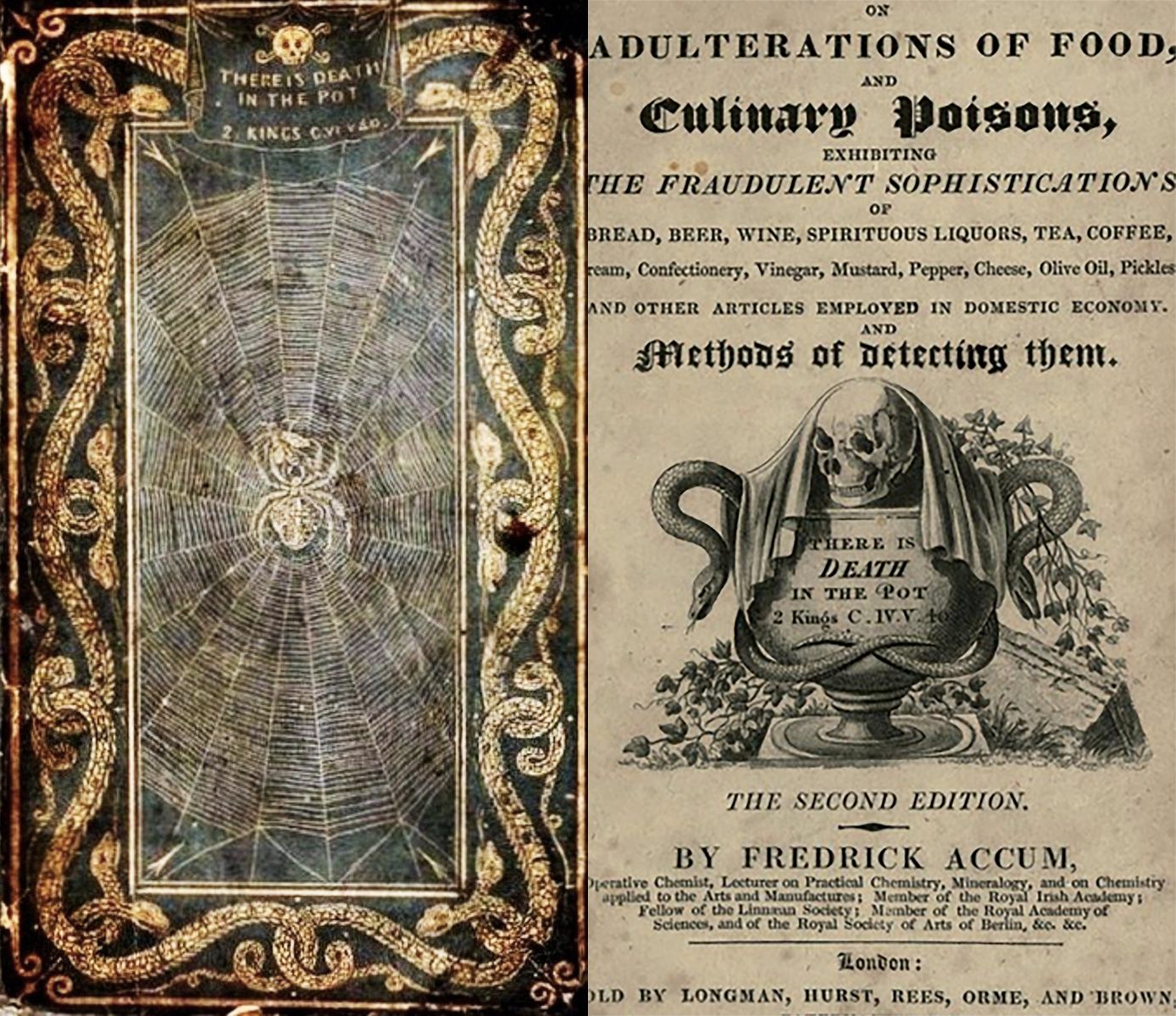Margarine Used To Be Pink, and More Colorful Tales From The Food Dye Industry
 Multi-colored cereal. (Photo: frankieleon/flickr)
Multi-colored cereal. (Photo: frankieleon/flickr)
A version of this post originally appeared on the Tedium newsletter.
It’s common today to hear food experts raise concerns about the amount of artificial dyes in our foods today, but this is actually a problem that has decreased with time: we’re in much better shape now than we were in the Victorian era.
At the dawn of the industrial age, food vendors realized they had to put bold, beautiful colors out there to ensure customers would buy their wares. Problem was, many such vendors were using materials that were far from edible. Lead, copper, arsenic? Those are just three of the things that might be hiding in those bright delicacies being sold on street corners back in the day.
Fortunately, German scientist Frederik Accum was there to call the food industry out for these nefarious practices. After living in London for decades and seeing the way food was messed with, he finally became disgusted enough to write a book on the matter, A Treatise on Adulterations of Food and Culinary Poisons. In the book, Accrum noted that vendors would dye spent tea leaves, reuse spent coffee, and contaminate both wine and cheese with lead.
 The cover and first page of “A treatise on adulteration of food”, with a warning of “death in the pot” (Photo: Public Domain/WikiCommons)
The cover and first page of “A treatise on adulteration of food”, with a warning of “death in the pot” (Photo: Public Domain/WikiCommons)
But Accum’s naming-names approach came with its own set of problems; eventually, he found himself facing so much legal trouble after the publication of his book that he had to move back to Germany.
Fortunately, Arthur Hassall was there to follow in his footsteps. Hassall, a chemist and microscope expert, was able to prove that the food-maker Crosse and Blackwell was using copper to make its pickles look greener. It was a pretty great gotcha that helped lead the British government to pass the Food Adulteration Act in 1860.
“Hassall’s work showed that adulteration was the rule rather than the exception and that adulterated articles were often sold as genuine,” The Royal Society of Chemistry’s Noel Coley wrote of Hassall. “He was meticulous both in his scientific work and in accurately recording where and when the samples had been purchased.”
 Arthur Hassall, c. 1868. (Photo: Public Domain/WikiCommons)
Arthur Hassall, c. 1868. (Photo: Public Domain/WikiCommons)
(Of course, good marketers know how to flip a bad situation into a good one. Crosse and Blackwell, soon after getting shamed by Hassall, advertised the fact that its pickles no longer were made with copper, and sales went through the roof.)
Since then, the nature of how we use food coloring has changed significantly—thanks, in part, to science and a stronger understanding of the negative impacts of what we eat.
“Companies use food coloring to simulate the presence of a fruit or a vegetable,” Michael Jacobson, the executive director of the Center for Science in the Public Interest, told Good magazine in 2011. “To be honest, they’re used to cheat people—to mislead consumers. It’s cheaper to use these than the real thing.”
 A warning about food adulteration in the cartoon “The Great Lozenge-Maker. A Hint to Paterfamilias” (1858) by John Leech. (Photo: Public Domain/WikiCommons)
A warning about food adulteration in the cartoon “The Great Lozenge-Maker. A Hint to Paterfamilias” (1858) by John Leech. (Photo: Public Domain/WikiCommons)
But back in 1906, when the Pure Food and Drugs Act was passed in the United States, you could find more than 80 different coloring agents in wide use on store shelves. These days, after a battery of tests that proved just how dangerous some of those substances were, we’re down to just seven approved dyes.
In an effort to appease the suddenly health-conscious public, General Mills, the maker of brightly colored sugary cereals like Trix and Lucky Charms, recently announced a plan to tone down all the artificial coloring it uses. The cereal maker is far from alone—Kraft dropped its shades of yellow from Kraft Macaroni and Cheese after critics spoke up, while Nestlé said it would make its candy a lot less colorful earlier this year.
“We wanted to make sure they were still fun vibrant colors that we are providing and the fruity flavor that kids expect,” General Mills cereal developer Kate Gallager told Good Morning America of the move back in June.
That said, the political system hasn’t always been particularly helpful in its treatment of food-coloring-related issues—a situation highlighted by the early troubles margarine faced from the dairy industry. The situation drew a huge amount of debate for around the role of the federal government in business affairs.
It also led to pink margarine.
The whole saga started like this: With butter proving too costly for some homes, margarine (which was then derived mostly from a mixture of animal and vegetable fats) proved a viable alternative that was both cheaper and could be used in many of the same ways.

Unappetizing cubes of margarine. (Photo: Veganbaking.net/Flickr CC BY-SA 2.0)
The problem? Well, margarine in those days was white, which gave it an unappetizing lard-like look. Eventually, margarine-makers got wise to this issue and started using yellow dye to improve the look of the substance. It helped margarine sales go through the roof, but it also got the attention of the dairy industry—which was incredibly powerful even then. They went to Congress in a push for legislation in an effort to take the momentum out of margarine. Congressmen from dairy hotbeds like Iowa and Wisconsin were particularly aggressive towards the upstart spread.
“If I could have the kind of legislation that I want, it would not be a source of revenue, as I would make the tax so high that the operation of the law would utterly destroy the manufacture of all counterfeit butter and cheese as I would destroy the manufacture of counterfeit coin or currency,” Rep. William Price (R-WI) said of his push for the Oleomargarine Act in 1886.
As bad as the law—which taxed margarine and effectively banned it from being colored yellow for nearly 70 years—was, it was nowhere near as bad as some of the laws against margarine passed at the state level. For a time, a number of states were requiring the naturally white margarine to be sold with a pink dye—with the obvious goal of making the substance look disgusting.

A 1919 newspaper ad for Swift Oleomargarine. (Photo: Public Domain/WikiCommons)
The Supreme Court quickly put the kibosh on this idea.
“In a case like this it is entirely plain that, if the state has not the power to absolutely prohibit the sale of an article of commerce like oleomargarine in its pure state, it has no power to provide that such article shall be colored, or rather discolored, by adding a foreign substance to it, in the manner described in the statute,” the court ruled in the 1898 case of Collins v. New Hampshire.
While margarine-makers were able to fend off the naked attempt to destroy their imitation butter, the ban on coloring the margarine yellow proved more difficult to shake. The solution for a time involved distributing packets of dye with the margarine, which was admittedly a bit awkward, but helped improve the gross-out factor of white fat spread.
Eventually, the passage of time worked in the favor of the margarine industry, and the federal regulations were repealed in the 1950s. By 1967, all of the state-level regulations that had limited the sale of margarine went away for good, too. The last state to drop its anti-dye strategy was Wisconsin, a full four years after the second-to-last hold-out, Minnesota, finally relented.
These days, the push towards more natural kinds of food coloring has the manufacturing industry looking in some interesting—if unlikely—directions for some new colors.

An illustration from 1897 of the Crocus sativus, from which saffron is derived. (Photo: Public Domain/WikiCommons)
There are some options, depending on what color you’d like to use:
Yellow: Saffron has a history that dates back thousands of years, and despite being fairly expensive for a spice, it remains one of the most popular ways to turn bowl of rice from boring white to colorful yellow. (If you’re going yellow or orange, turmeric is also an option.)
Red: If you like red-colored food, you may be eating bug extract without even realizing it. For years, cochineal extract has been a key way that food has gained its bright red coloring. Using said bugs, which tend to grow on cactuses, is extremely common, but generally grosses people out when you tell them: Back in 2012, Starbucks had to announce to the public that it would stop using the red dye after a public outcry over the fact that one of the chain’s drinks wasn’t vegetarian.
Green: As you might guess, natural green dye is pretty easy to come by, as long as your goal is to give food a vegetable-style hue. The secret to going green naturally is simple—just blend up some boiled spinach.
 Cochineal on Opuntia cactus, La Palma. (Photo: Zyance/WikiCommons CC BY-SA 2.5)
Cochineal on Opuntia cactus, La Palma. (Photo: Zyance/WikiCommons CC BY-SA 2.5)
Blue: Creating a natural blue dye is extremely tough—so much so that Trix is dropping blue colors from its cereal when it goes natural next year. But it can be done! The best strategy for going blue, according to Whole New Mom, is by mixing red cabbage extract with baking soda. And the food science world is still buzzing about the FDA’s decision to allow spirulina extract, a natural blue-green color that comes from algae, to be used in candy and gum.
White: If you wanted to make white candy, your options used to be extremely limited. Really, you only had one option: The synthetic titanium dioxide. But in 2009, the Danish company Chr. Hansen announced the creation of a calcium-carbonate based white dye.
But for all the apparent issues that arise with artificial coloring, they still have a place in most people’s hearts.
Case in point: The rise of the red velvet cake. In the 1930s, the Adams Extract Company—which creates artificial dyes and flavorings—was smarting from a decline in business due to the Great Depression.
Instead of taking this situation lying down, the company came up with a way to use its dyes in a novel fashion: They released a recipe that relied on red food coloring and butter extract to create an extremely rich cake, then offered up that recipe to grocery stores around the country.
The result became legendary and widely imitated—artificial coloring or no.
 A version of this post originally appeared on Tedium, a twice-weekly newsletter that hunts for the end of the long tail
A version of this post originally appeared on Tedium, a twice-weekly newsletter that hunts for the end of the long tail
Gastro Obscura covers the world’s most wondrous food and drink.
Sign up for our regular newsletter.
























Follow us on Twitter to get the latest on the world's hidden wonders.
Like us on Facebook to get the latest on the world's hidden wonders.
Follow us on Twitter Like us on Facebook